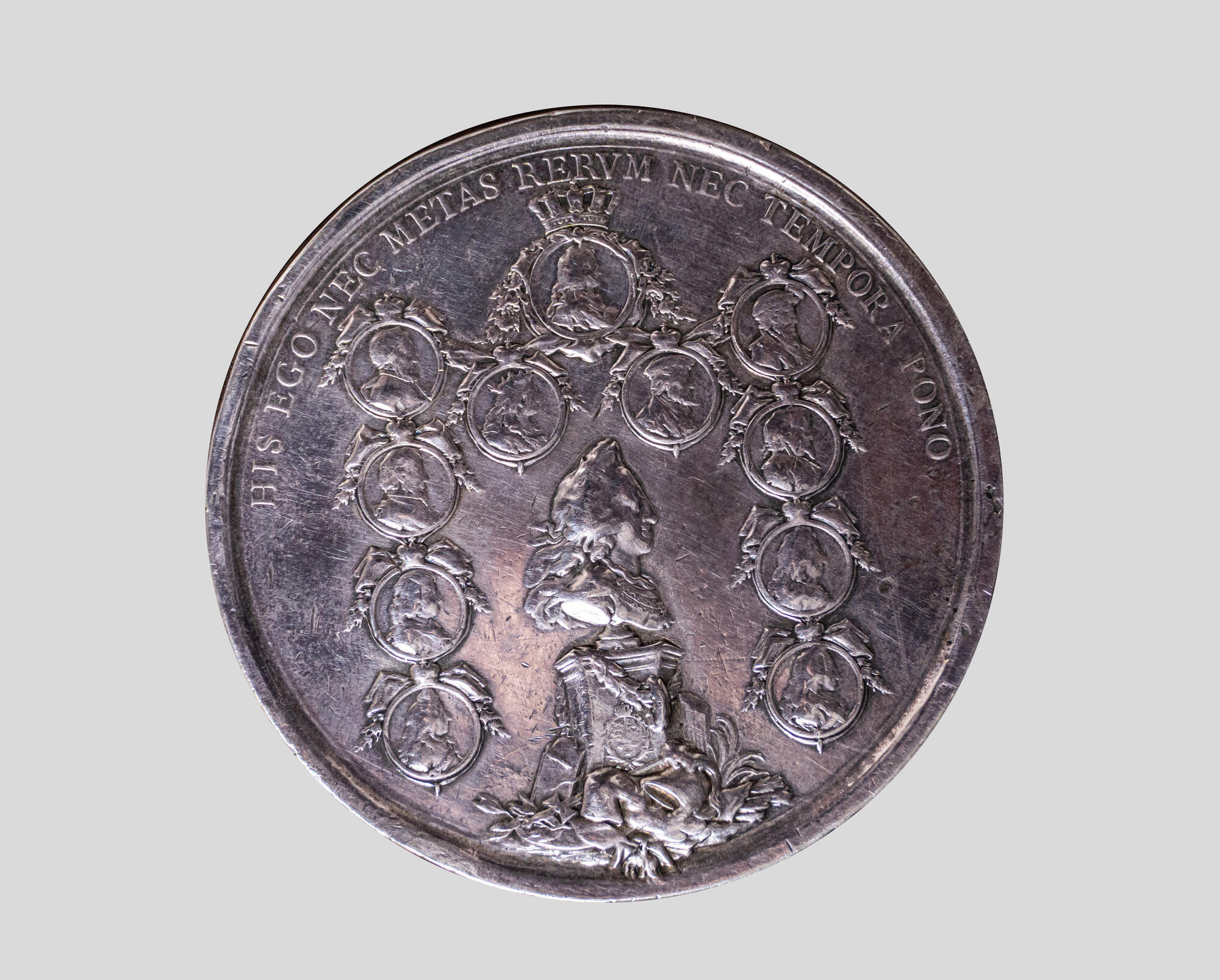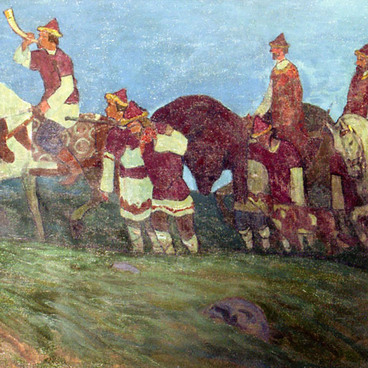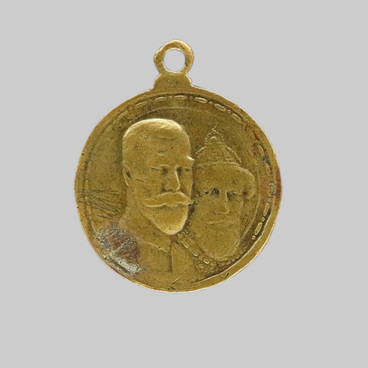The commemorative medal, which is kept in the exposition of the Palace Complex of Oldenburg, was made in 1749, for the 300th anniversary of the Oldenburg House. This dynasty of German origin ruled Denmark for about four centuries. On the obverse — the face of the medal — portraits of twelve Danish kings of that family were minted: the artist arranged them in the form of an arch crowned with a crown. Below there is a portrait of Frederick V: he ruled Denmark at the time when the medal was issued. That king was known for his benevolent and affable character, he patronized the arts, although he almost did not interfere in state affairs, and under him the country was actually led by ministers. The reign of Frederick V was peaceful, and he earned the nickname ‘Kind’.
Under the arch, on the obverse of the medal, there is a bust of Frederick V on a pedestal, at the foot of which you can see a tablet entwined with a snake, a sword, a helmet, a quiver with arrows and a broken column. The upper part of the pedestal is decorated with a laurel wreath, and in the middle there is a medallion with the coats of arms of the allied kingdoms: three leopard lions with hearts denote Denmark, a rearing lion under a crown — Norway, three crowns — Sweden. There is an inscription in Latin along the upper edge of the obverse, under the rim: ‘His ego nec metas rerum, nec tempora pono’ — ‘I will not put limits and boundaries to the property and lives of these persons.’ This is a quote from the poem ‘Aeneid’ by Roman poet Virgil.
On the reverse, or the back side of the medal, the following Latin text is also located: ‘Regnante gloriosissimo monarcha Friderico Qvinto deliciis populi svi tertivm absolvtvm secvivm ex qvo avgvstissima dom vs Oldenburgica divini favoris venerando exemplo Daniae Norvegiaeqve sceptra e a tenet pietatis I vstitiae clementiae prvdentantiae constantiae Gloria vt votis svpersit nihil nisi vt longa post intervflla illa ex stirpe svccedat donec volvvntvr secvla patri regi rex filivs. MDCCXLIX’.
Its translation is as follows: ‘In the glorious reign of Frederick the Fifth, for his own pleasure and in commemoration of the third century by the grace of God of the dominion of the house of Oldenburg, who holds the scepter of Denmark and Norway, while observing piety, being merciful judges, prudent rulers, successful warriors. May the mercy of the Son of the Lord be upon them. 1749.’ Above the text a helmet is minted on crossed swords, under the inscription — a stylized image of a flower.



